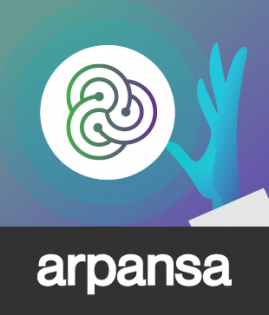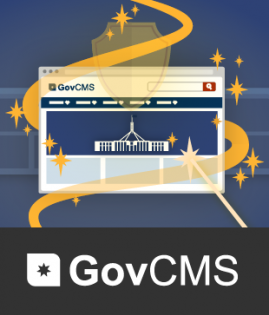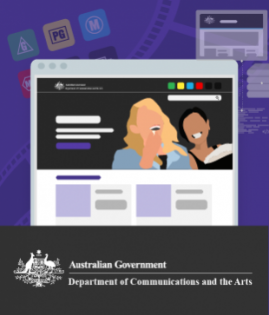Contact us
First Floor, 159 Victoria Pde
Collingwood, VIC 3066
(Google Map)
1300 727 952
or
+61 3 9910 4099
Updated 2018/2019 Victorian Budget site
For the third year running Salsa Digital worked on the Victorian Budget website, building on the original GovCMS site that we developed in 2016.
The players
The Department of Premier and Cabinet (DPC) works with the Department of Treasury and Finance (DTF) on elements of the Victorian State Budget — including the website. Salsa Digital has been working with the DPC and DTF for the past few years on the site (you can view the original 2016 case study or last year’s blog for more information).
The problem
The Budget website always runs to tight timeframes, with only a few weeks to create the new, updated site based on the embargoed Budget content and data. The DPC needed to find a trusted partner to ensure site updates ran smoothly.
The solution
This year was a smaller job in terms of new features and site updates (compared to 2016 when we transformed the whole site from a PDF-based website to a fully interactive site on GovCMS, and 2017 when we delivered many new features and enhancements).
The first step was to bring a copy of the 2017 site from GovCMS software as a service (SaaS) to GovCMS platform as a service (PaaS) on an isolated environment. This is a temporary move that gives us more control and flexibility over the environment and deployment.
From there, we could focus on this year’s changes, which were mostly theming updates, supported by relevant configuration updates. Theming controls the look and feel of the website, including colours and fonts. (A frontend themer takes a designer’s visual design and page layouts/templates and uses code to make the design actually happen on the site.)
Pretty much every component had some theming updates, from simply increasing font sizes and changing the colour scheme (to match this year’s Budget colours) to much larger theming changes. Changes to the interactive regional and metro maps (which required both theming and configuration) were the most significant single feature change. All the website elements were also updated, including the header, footer, banners and page templates.
DPC had run some user experience (UX) sessions after the release of last year's website and pushed that information into the backlog. Other non-technical information about the audience was also escalated to decision-makers who used it to prioritise the maps on the homepage.
Some of the more detailed changes include:
The homepage
- Last year’s projects-based map was replaced with a video from the Premier highlighting some of the key elements of the 2018/2019 Budget.
- The homepage content was also reduced, so that people could find out how the Budget would affect them and their community quickly.
- Spotlight Budget highlights on the homepage were turned into active links (last year they were just blocks of highlighted text).
Video and image feature
- Existing page templates were updated to feature a video or an image, with a consistent visual treatment of this feature across all pages.
Regional Victoria map
- Like last year, regional Victoria is broken down into areas clearly visible on a map of Victoria (on the homepage). Each area is clickable so citizens can see the Budget changes and plans for their area.
Melbourne metro map
- Last year there was only one map for metro Melbourne, however this year the area has been further divided into six metro communities so users can easily see and click on the community that’s relevant to them.
Updated information architecture (IA)
- The DPC and DTF also used the new Budget as an opportunity to update the IA of the site, reducing the number of level one menu items to improve navigation and therefore usability. They also created a regional landing page and a metro Melbourne landing page, again for enhanced usability.
How the maps work
The maps were one of the main features we worked on this year (and last year). As you hover over the map (regional Victoria or metro Melbourne) the area highlights and is a clickable link, which takes users to content about how the Budget impacts that area.
Going live
In preparation for the go-live date, Salsa’s tech engineers were working on code, then physically delivering the code to the office in the DTF, where content was being entered. For security, this local server at the DTF also had no internet access. Salsa would make changes in our testing environment then do code drops on-site so the client could see how the website was looking after theme updates and other changes.
The site launched on 1 May, transitioning from the 2017/2018 Budget site to the new 2018/2019 Budget site. The updated site is, of course, compatible with desktop computers, tablets and mobile phone so citizens can access the information from any device.
Next steps
Now that the site’s been launched, in the next month or so we’ll look at moving the site back to the SaaS environment. The Budget site will then become a normal GovCMS site with all the benefits of SaaS.
The benefits
The Victorian Budget website is a little different to many of our jobs where site enhancements or content migration to a different content management system (CMS) or platform provide big benefits. Rather, the Victorian Budget website is a yearly project, that’s being enhanced a little each year (since our original larger development in 2016) to create a better user experience. This is based on DPC's use of Hotjar on the site to analyse user behaviour and user experience testing on the website to get feedback on specific scenarios.
This year, the updates DPC and DTF requested have delivered:
-
Increased usability (especially the updated content and new IA)
-
A slightly new look and feel that ties into the hardcopy brochure
-
Page templates for feature videos and images to create a better visual experience
-
Better services for metro Melbourne citizens (with the new metro Melbourne map being broken into six communities)
In addition, the DPC and DTF still have all the benefits of the GovCMS system, such as: a stable and reliable CMS, 24x7 enterprise support and proactive monitoring, security compliance at the highest level and an easy-to-use CMS.
Why Salsa Digital?
DPC approached Salsa to work on the new Budget website. They came to us because we have a proven track record with both the DPC and the Budget website. Happy with our services in the past few years, they were keen for Salsa to come on board again. We also have a very experienced team of frontend and backend Drupal/GovCMS developers.
About Salsa Digital
Salsa is a highly specialised, enterprise-grade digital agency focused on open source for social good and innovation. We’re committed to the open government movement and to the many benefits this ethos provides including transparency, innovation, and sharing and improving problems and patterns solved by the pioneers before us.
The open source movement has played a key role in the evolution of Salsa. Over the years, as technology and practices have developed, this commitment to open source has grown to encompass a much broader base beyond open source content management systems (open CMS) — open data, open platform and open design. We contribute and deliver services in all these areas, with a strong involvement in specific open source initiatives such as Drupal, Wordpress, GovCMS, Single Digital Presence, Kubernetes/Lagoon and CKAN.


